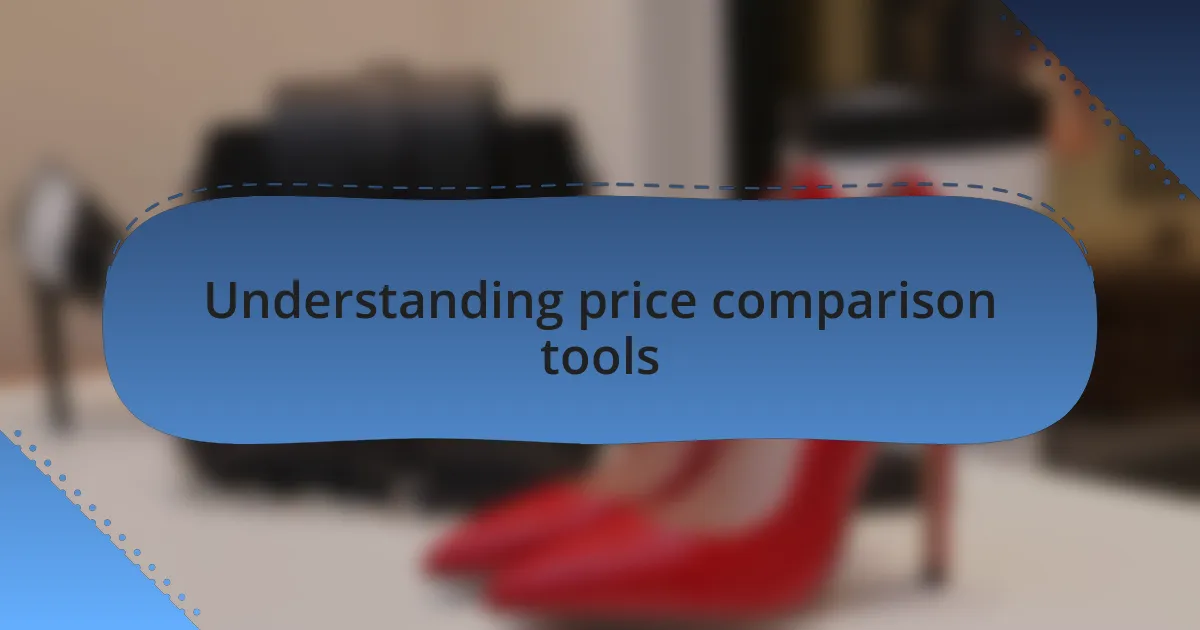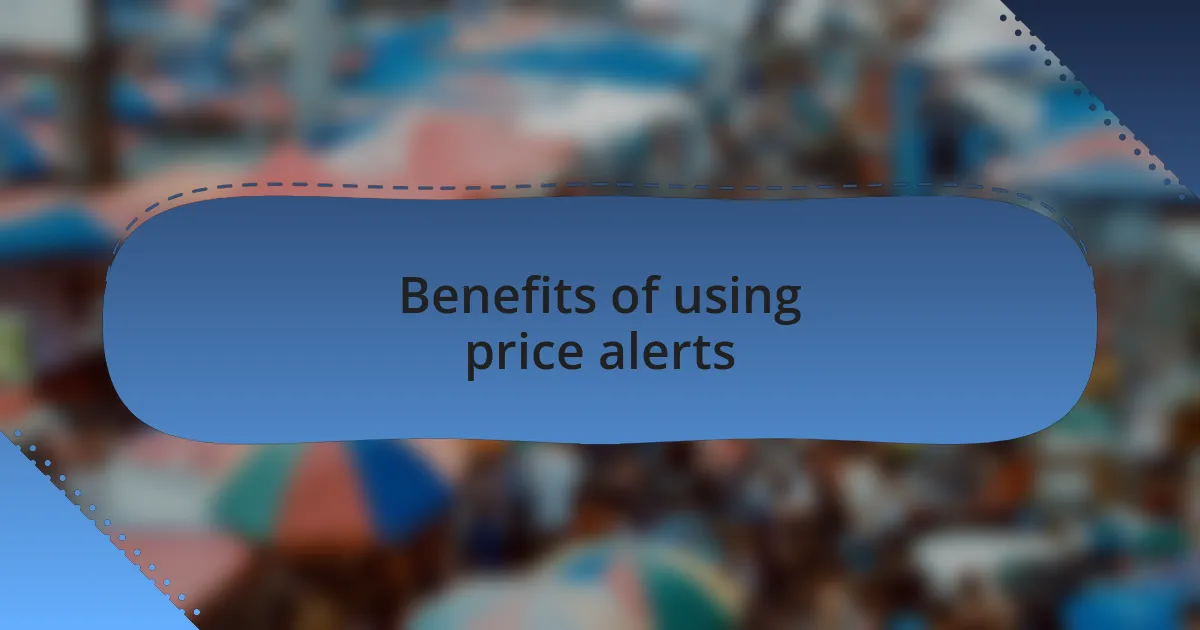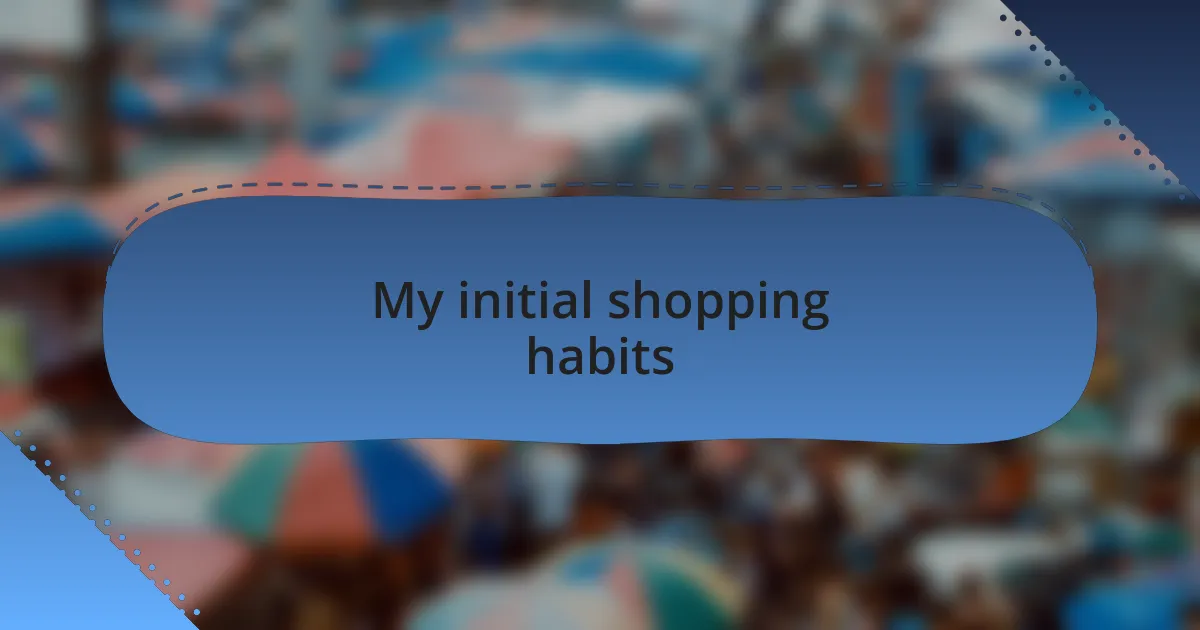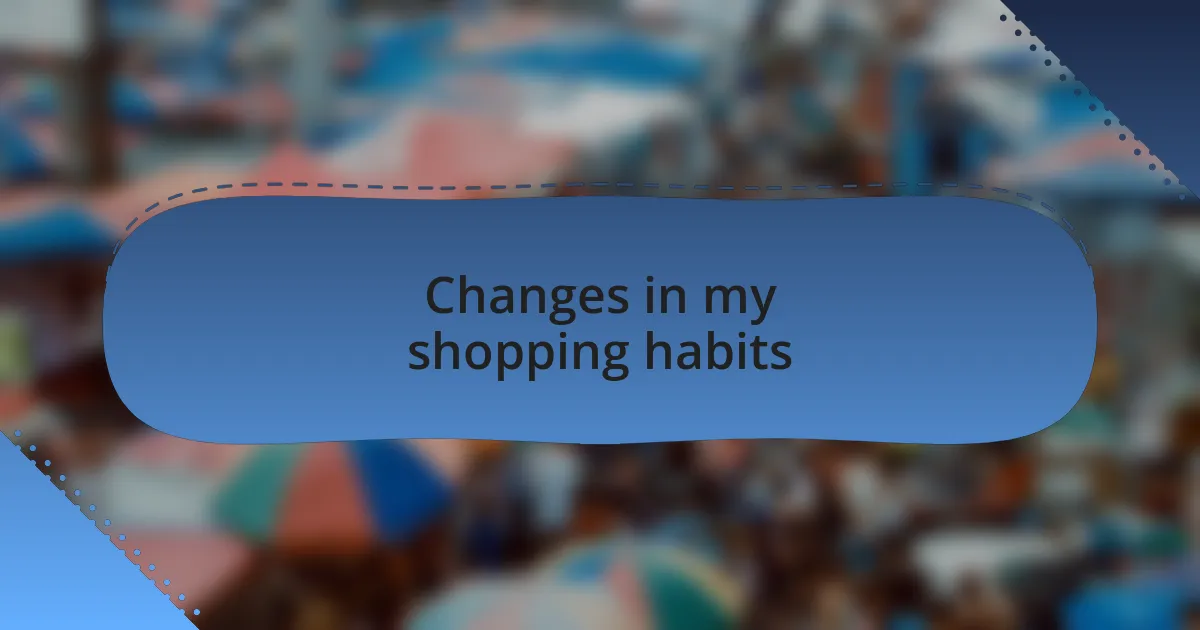Key takeaways:
- Price comparison tools simplify shopping by quickly revealing the best deals and saving time and money.
- Price alerts help consumers avoid impulsive purchases, encouraging strategic buying and informed decision-making.
- Embracing price alerts transformed shopping habits from impulsiveness to patience, fostering a more rewarding shopping experience.
- Using price alerts diminishes the anxiety of missing out on deals, allowing for calculated purchases and enhanced appreciation of savings.

Understanding price comparison tools
Price comparison tools have dramatically changed the way I approach shopping. I remember the first time I used one—I was amazed at how quickly I could see the best deals across various retailers. Have you ever felt overwhelmed by options? These tools simplify the process, allowing me to make informed choices without spending hours in a store or endlessly scrolling online.
In my experience, these tools don’t just save money; they save time and mental energy. I recall a time when I spent an entire weekend researching a new laptop. Once I discovered a price comparison website, the entire ordeal took just minutes. The relief I felt was palpable. It’s like having a personal assistant dedicated to finding the best price for me.
What I find particularly fascinating is how price comparison tools often highlight unexpected savings, such as seasonal discounts or exclusive offers. Have you ever found yourself hesitating on a purchase, only to discover you could have saved a significant amount with just a few clicks? That realization truly enhances the shopping experience, transforming it from a tedious task into an exciting treasure hunt.

Benefits of using price alerts
Using price alerts has profoundly transformed my shopping experience. One of the standout benefits for me is the thrill of never missing a deal. There have been instances where I desperately wanted a specific gadget but hesitated because of its price tag. With price alerts, I can set my thresholds and receive notifications as soon as the price drops. It feels rewarding to snag something I wanted at a fraction of the cost.
Another advantage I’ve noticed is how price alerts encourage patience in my shopping habits. Instead of rushing to buy something at the first tempting price, I can sit back and wait. I remember eyeing a pair of shoes that seemed perfect, but I wasn’t ready to splurge. When I got the notification that they were 30% off, it felt like fate! This wait-and-see approach has not only saved me money but also helped me appreciate my purchases more.
Finally, using price alerts gives me peace of mind. It cuts down the stress of constantly checking prices or feeling like I might be overpaying. I trust that my price alert system will do the work for me. Does that sound familiar? It’s like having a shopping companion who’s always on the lookout for the best deal—something I never knew I needed until I tried it.

How price alerts work
When I set up a price alert, the process is surprisingly simple and user-friendly. Most platforms allow me to choose the product and specify my target price. It’s like having a personal assistant dedicated to monitoring my favorite items. I often find myself dreaming about that ideal purchase while knowing that my alert will keep me updated.
Once my alert is triggered, I’m immediately notified via email or an app notification. This instant communication is crucial; I remember waiting on a tech gadget I’d been eyeing for months. The moment I received that alert about a significant price drop, the adrenaline rush was undeniable. It’s not just about the discount; it’s about having the opportunity to act quickly and grab the deal before it’s gone.
What I value most about price alerts is their ability to keep my shopping habits in check. Rather than impulsively buying, I now approach shopping more strategically. When I shop this way, I ask myself: Does this alert mean it’s time to buy? This thoughtful consideration adds a new layer of excitement to my purchases, transforming shopping from a chore into an exhilarating quest for value.

My initial shopping habits
Before I embraced price alerts, my shopping habits were far more impulsive. I can recall countless times buying items on a whim, often regretting my choices shortly after. The thrill of the moment would overwhelm my better judgment; I’d frequently question, “Did I really need this?” only to find it gathering dust a few weeks later.
Initially, my focus was all about immediate gratification. I loved the rush of finding something on sale, but I rarely considered whether it was truly worth the price. One memorable instance was when I stumbled upon a pair of shoes I thought were a steal. I didn’t really research other options, and it wasn’t until a friend pointed out a similar pair at a lower price that I realized my hasty decision-making often left me feeling more disappointed than satisfied.
Looking back, I see how often my excitement led to overspending. I remember feeling a mix of thrill and guilt after making those impulsive purchases. It made me wonder: Was the joy of shopping worth the aftermath of buyer’s remorse? This inner conflict highlighted the need for a more thoughtful approach, which eventually led me to discover the world of price alerts.

Discovering price alerts
Discovering price alerts was a game changer for me. I remember feeling a wave of relief when I first signed up for them. Suddenly, the need to constantly check prices became obsolete; instead, I could focus on what I truly wanted. It was as if a weight had been lifted—I could simply wait for the right moment without the nagging anxiety of missing out.
One particularly memorable experience stands out. I had my eye on a tech gadget that seemed perfect for my needs, yet the price fluctuated wildly. When I received the price alert notifying me of a significant drop, it felt like the universe had conspired in my favor. I hardly believed it—was this a little piece of destiny or just a well-timed notification? Either way, it was a victory that made my shopping feel more intentional.
Now, I find that price alerts not only save me money but also encourage patience and strategy in my shopping. Instead of being caught up in the chaos of spontaneous buys, I feel empowered to make decisions based on facts rather than impulse. Isn’t it fascinating how a simple notification can transform the way we approach our spending? My once frantic shopping tendencies have morphed into deliberate choices, bringing joy rather than remorse.

Changes in my shopping habits
Since embracing price alerts, my shopping habits have significantly evolved. Previously, I would often buy items impulsively, fearing I might miss out on a deal. Now, I take a moment to reflect on what I truly need, allowing the alerts to guide me rather than my immediate cravings.
I remember a time when I was tempted to purchase a new set of kitchen knives after watching an enticing advertisement. Instead of jumping in, I let the price alert do its work. Not only did it notify me when the price dropped, but it also gave me time to evaluate whether the purchase was genuinely necessary. That shift in mindset—transforming shopping from a knee-jerk reaction to a calculated decision—has brought me a sense of peace I didn’t know I was missing.
Moreover, I’ve begun to appreciate the joy of waiting for the right moment. I often think of it as a small but significant dance between desire and timing. When I do eventually make a purchase, it feels more rewarding, almost like a celebration of patience. Have you ever experienced that euphoric moment when your wait pays off? It’s moments like these that make me realize how much my shopping habits have matured.